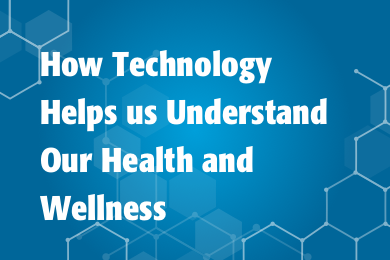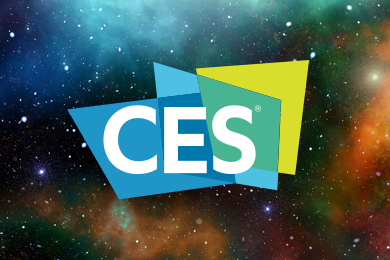May 1, 2018
Bitcoin, Litecoin, Ethereum, Dash, Ripple, Dogecoin, the list goes on – cryptocurrencies have captured the public imagination, and they’ve grown (and sometimes fallen) rapidly this past year.
Of the buzzwords often associated with cryptocurrencies, one is blockchain, which has the potential to impact a number of industries (like the Internet of Things). Another, which can be a bit more confusing, is coin mining. To help clarify the concept of mining, we talked with Wei-Tek Tsai, IEEE member and Professor at Beihang University (China), who specializes in cryptocurrencies.
New Coins
Coin mining relates to the way digital currencies are issued. With Bitcoin, for example, in the mining process, “machines need to perform a computation that is tough to solve but easy to verify the solution,” says Tsai. The difficulty of the puzzle varies to keep the rate of block creation constant, allowing the currency to operate without a central regulator.
For solving this numeric puzzle, the miner gets to establish the next block in the blockchain, as well as newly-minted bitcoins. They also collect small transaction fees from users. You can read a detailed description on IEEE Spectrum here.
Speed and Energy
Since anyone can get a copy of the mining software, computing speed becomes the essential differentiator. Therefore, it’s no wonder that the process is energy intensive. And the fact that current mining methods use too much energy is hardly a secret. “Last year, Bitcoin took about the electricity demand of Ireland,” says Tsai. “People can design better hardware for mining, better machines that use less energy and produce more coins.”
Distributed Processing
For some, the sound of loudly-spinning fans during normal web browsing can prompt the question of whether their computer’s being used for mining. After all, crypto-mining malware had a big year last year. Don’t assume the worst, Tsai says: “some digital currencies (such as Bitcoin) need specialized hardware to be competitive in mining,” making your computer an unlikely candidate. So, what are the signs if you’re involved in the process? “If you see your GPU running hard, you know it’s mining Ethereum or similar digital currencies.”
The Future of Cryptocurrencies
In the future, issuing coins through means other than mining will improve efficiency. Just how efficient will depend partially on how security tokens are regulated. “The U.S. Securities and Exchange Commission (SEC) has imposed new rules on digital currencies, and likes them to be considered security tokens, meaning that issuing and trading tokens needs to follow SEC rules,” says Tsai. These rules, and modifications to them in the coming years, could have a “profound impact” on the technology and direction of the digital currency market.
To watch our latest interview with Wei-Tek Tsai on cybersecurity and cryptocurrencies, click here.

 Meaningful Momentum or Running in Place?
Meaningful Momentum or Running in Place? AI Through Our Ages
AI Through Our Ages Liquid Infrastructure: Our Planet's Most Precious Resource
Liquid Infrastructure: Our Planet's Most Precious Resource The Impact of Technology in 2025
The Impact of Technology in 2025 Quantum and AI: Safeguards or Threats to Cybersecurity?
Quantum and AI: Safeguards or Threats to Cybersecurity? Why AI Can't Live Without Us
Why AI Can't Live Without Us Bits, Bytes, Buildings and Bridges: Digital-Driven Infrastructure
Bits, Bytes, Buildings and Bridges: Digital-Driven Infrastructure Impact of Technology in 2024
Impact of Technology in 2024 Emerging AI Cybersecurity Challenges and Solutions
Emerging AI Cybersecurity Challenges and Solutions The Skies are Unlimited
The Skies are Unlimited Smart Cities 2030: How Tech is Reshaping Urbanscapes
Smart Cities 2030: How Tech is Reshaping Urbanscapes Impact of Technology 2023
Impact of Technology 2023 Cybersecurity for Life-Changing Innovations
Cybersecurity for Life-Changing Innovations Smarter Wearables Healthier Life
Smarter Wearables Healthier Life Infrastructure In Motion
Infrastructure In Motion The Impact of Tech in 2022 and Beyond
The Impact of Tech in 2022 and Beyond Cybersecurity, Technology and Protecting Our World
Cybersecurity, Technology and Protecting Our World How Technology Helps us Understand Our Health and Wellness
How Technology Helps us Understand Our Health and Wellness The Resilience of Humanity
The Resilience of Humanity Harnessing and Sustaining our Natural Resources
Harnessing and Sustaining our Natural Resources Creating Healthy Spaces Through Technology
Creating Healthy Spaces Through Technology Exceptional Infrastructure Challenges, Technology and Humanity
Exceptional Infrastructure Challenges, Technology and Humanity The Global Impact of IEEE's 802 Standards
The Global Impact of IEEE's 802 Standards Scenes of our Cyber Lives: The Security Threats and Technology Solutions Protecting Us
Scenes of our Cyber Lives: The Security Threats and Technology Solutions Protecting Us How Millennial Parents are Embracing Health and Wellness Technologies for Their Generation Alpha Kids
How Millennial Parents are Embracing Health and Wellness Technologies for Their Generation Alpha Kids Space Exploration, Technology and Our Lives
Space Exploration, Technology and Our Lives Global Innovation and the Environment
Global Innovation and the Environment How Technology, Privacy and Security are Changing Each Other (And Us)
How Technology, Privacy and Security are Changing Each Other (And Us) Find us in booth 31506, LVCC South Hall 3 and experience the Technology Moon Walk
Find us in booth 31506, LVCC South Hall 3 and experience the Technology Moon Walk Virtual and Mixed Reality
Virtual and Mixed Reality How Robots are Improving our Health
How Robots are Improving our Health IEEE Experts and the Robots They are Teaching
IEEE Experts and the Robots They are Teaching See how millennial parents around the world see AI impacting the lives of their tech-infused offspring
See how millennial parents around the world see AI impacting the lives of their tech-infused offspring Take the journey from farm to table and learn how IoT will help us reach the rising demand for food production
Take the journey from farm to table and learn how IoT will help us reach the rising demand for food production Watch technical experts discuss the latest cyber threats
Watch technical experts discuss the latest cyber threats Explore how researchers, teachers, explorers, healthcare and medical professionals use immersive technologies
Explore how researchers, teachers, explorers, healthcare and medical professionals use immersive technologies Follow the timeline to see how Generation AI will be impacted by technology
Follow the timeline to see how Generation AI will be impacted by technology Learn how your IoT data can be used by experiencing a day in a connected life
Learn how your IoT data can be used by experiencing a day in a connected life Listen to technical experts discuss the biggest security threats today
Listen to technical experts discuss the biggest security threats today See how tech has influenced and evolved with the Games
See how tech has influenced and evolved with the Games Enter our virtual home to explore the IoT (Internet of Things) technologies
Enter our virtual home to explore the IoT (Internet of Things) technologies Explore an interactive map showcasing exciting innovations in robotics
Explore an interactive map showcasing exciting innovations in robotics Interactively explore A.I. in recent Hollywood movies
Interactively explore A.I. in recent Hollywood movies Get immersed in technologies that will improve patients' lives
Get immersed in technologies that will improve patients' lives